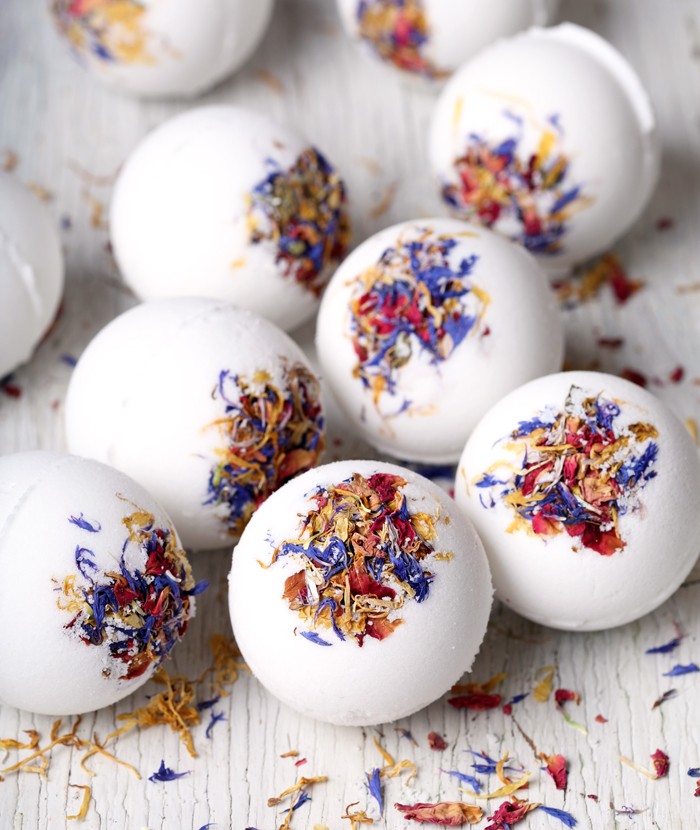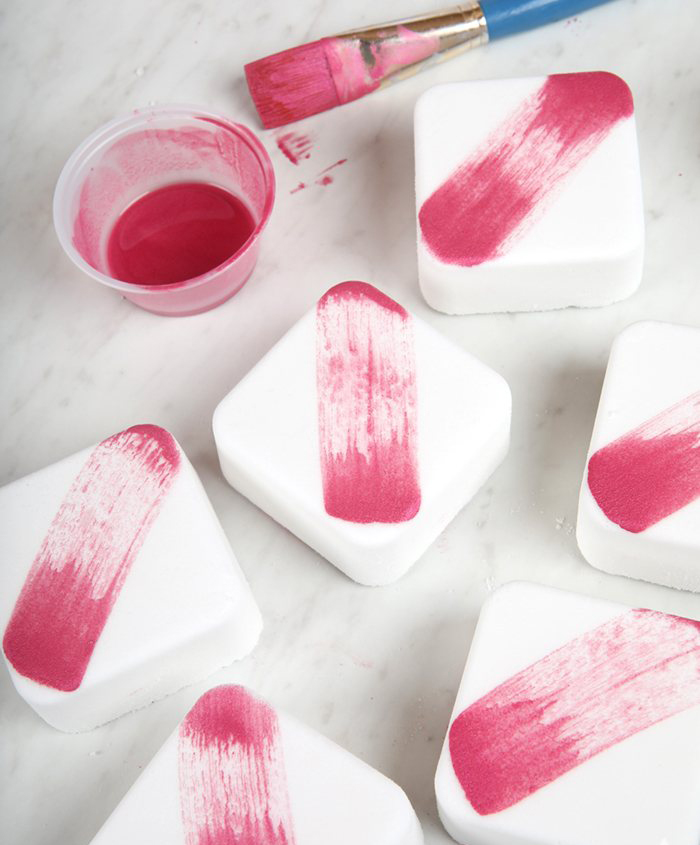
Bath bombs are great for both beginner and advanced crafters. The recipe is simple, but they do take some practice. Bath bombs are sensitive to moisture - they can crumble, fall apart, or fizz incorrectly. Below, we go over how to get perfect results every time.
First, the basics. Bath bombs are made with 2 parts baking soda and 1 part citric acid. That causes the fizzing reaction when they're dropped in water. They typically need witch hazel to hold together. From there, you can customize them with colors, fragrances, and additives. Find bath bomb making supplies here.
Now, onto the questions!
1. Why is my bath bomb crumbly/cracking?
It's probably too dry. You want the mixture to feel like wet sand and hold its shape when squeezed. Use one hand to spritz with witch hazel and one hand to mix until it's the right consistency.
If your bath bomb cracks after it's out of the mold, it's likely too wet. You can prevent that by using less witch hazel, or by using witch hazel instead of water. We don't recommend water because it makes bath bombs fizz too early.
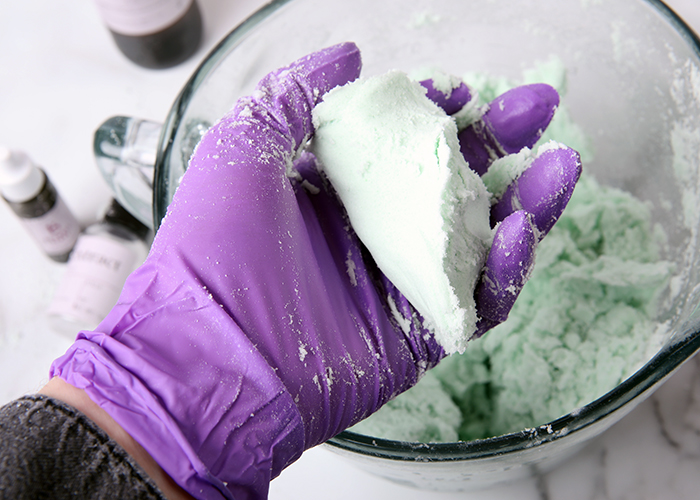
2. Why is my bath bomb soft?
There may be too much moisture. Try adding more baking soda or citric acid to balance it out. If you live in a really humid area, we recommend investing in a dehumidifer to keep things dry while you work. You can also add about 1 teaspoon of kaolin clay per cup of powder. It helps bath bombs harden and hold their shape.
3. Why does my bath bomb have lumps, warts, or bumps on the surface?
This is usually a result of clumps in the dry ingredients or not fully mixing in the fragrance oil. We recommend sifting all your dry ingredients so they're nice and smooth. Then, add in your wet ingredients and mix with your hands for 1-2 minutes to ensure everything's incorporated fully.
4. Why is my bath bomb not fizzing very much?
Try increasing the amount of citric acid so there's a 2:1.5 ratio. You can also decrease the amount of oil/butter and store the bath bombs in a cool, dry place with a dehumidifier or a fan running. You may also want to remove cornstarch from your recipe - in our testing, we found it inhibits fizz.
5. Why is my bath bomb expanding out of the mold?
The mixture is so wet that it's fizzing, which causes it to expand. Use witch hazel instead of water, and avoid any colors or fragrances with water. If you live in a really humid area, we recommend investing in a dehumidifer to keep things dry while you work.
6. What colorants can I use?
You can use micas, clays, or other natural bath bomb colorants. Just add them to the powders and stir well. We don't recommend pigments because they tend to leave streaks of color.
Powdered colorants are oil based, so they can pool on top of the water and get on your skin. To help, add polysorbate 80. It's an emulsifier that mixes the colors into the water. Start with about 0.2 ounces per pound of bath bomb mixture. We often get asked about a natural alternative to polysorbate 80. We haven't found one that works as well. You can leave it out if you like.
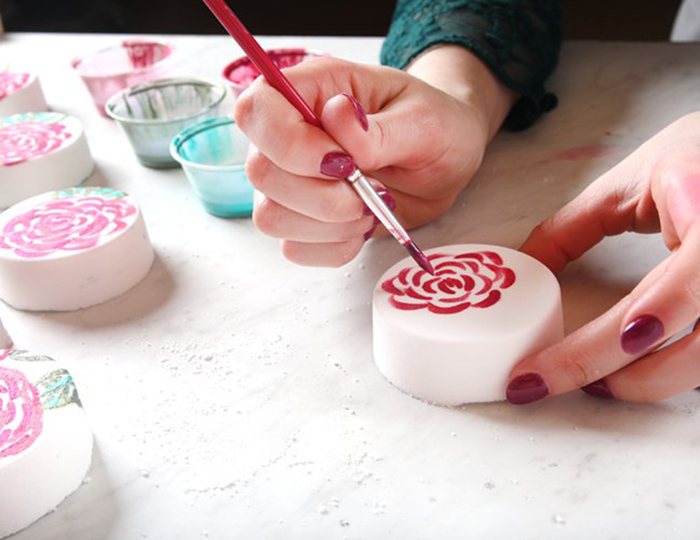
7. How much colorant can I add?
Start with about 1/8 teaspoon of powdered color per pound and go from there. Keep in mind, the more color you add, the more likely it will stain the tub. We recommend using no more than 2 teaspoons of mica per pound of bath bombs, and using polysorbate 80 to help the color distribute more evenly.
8. What can I use in place of witch hazel?
Oils are a great way to moisten bath bombs and add skin-loving properties. Start with about 0.5 ounces per pound. Some crafters use 99% isopropyl alcohol, but it can dry the bath bombs out so they're more likely to crack. Try a combination of oil and alcohol to hold the mixture together. We don't recommend water.
9. How much fragrance/essential oil should I add?
The Bramble Berry Fragrance Calculator makes it easy! Just select “Salts” from the drop-down menu.
10. How much oil and butter can I add?
Start with about 0.5 ounces per pound. If you're working with a hard oil or butter, make sure it's melted before it's added to the powders. You may want to add polysorbate 80 to help the oil mix into the water, rather than pooling on top. That will also make the tub less slippery when you're getting out.
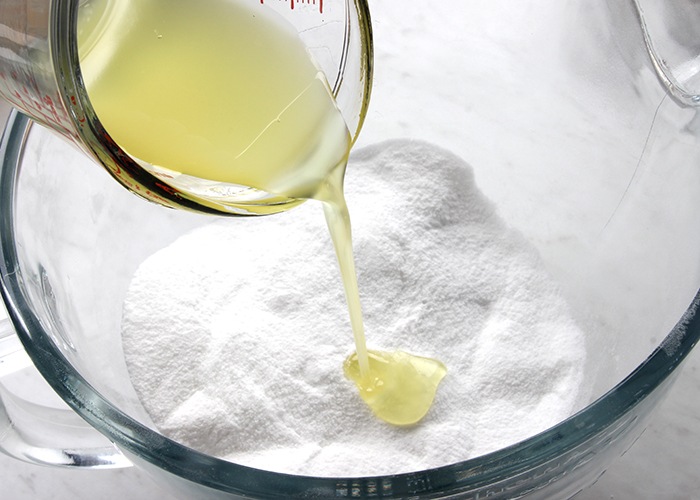
11. Can bath bombs discolor?
Yes, they can if you use a fragrance with vanilla. It can take longer to appear, or it may never turn brown. You can add Vanilla Color Stabilizer, but it may not work. Use a fragrance that doesn’t discolor to be on the safe side.
12. What molds are best for bath bombs?
Plastic or stainless steel molds are a great option. You can use silicone molds as well, but make sure to use a recipe with less moisture and pack them it in tightly so the bath bombs don't stick.
14. Why are my bath bombs not sticking together in the stainless steel bath bomb mold?
Try adding 5-10 drops of cyclomethicone in both sides of the bath bomb mold and swirling it around. Then, let the molds drain on a paper towel. That helps the bath bombs slide out easily. Having the correct texture helps too - make sure the mixture feels like wet sand and holds its shape when squeezed.
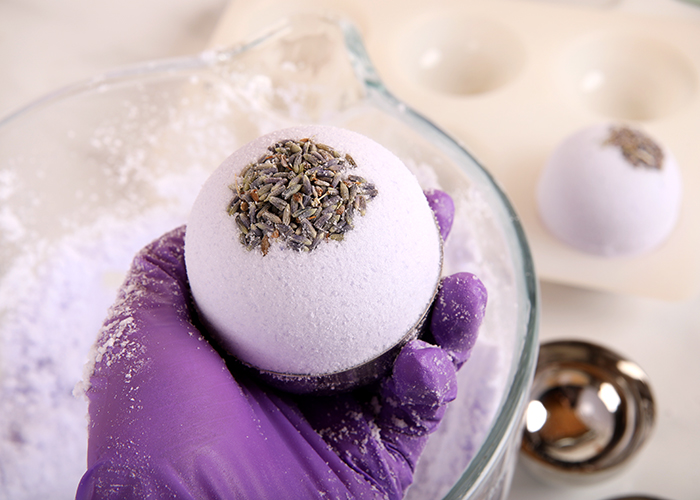
13. How long should bath bombs stay in the mold?
At least 4 hours or up to overnight. If you try to remove the bath bomb before it's fully dry, it can crumble.
15. How do I store bath bombs?
We recommend wrapping them tightly with plastic wrap and storing them in a cool, dry place. You can use a dehumidifier or run a fan over them as they dry. Then you can package them any way you like.
16. How long do bath bombs last?
Use them in 3-6 months for the best results.
We have plenty of inspiration to help you get started! Find bath bomb projects here.
